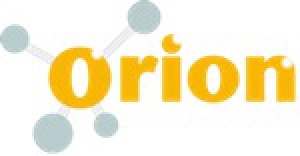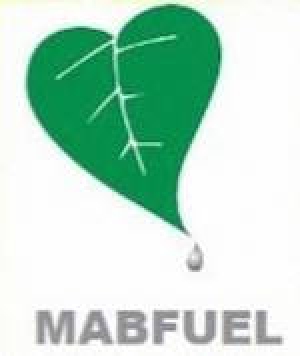Super User
AccliPhot – Environmental Acclimation of Photosynthesis
Collectively, the projects undertaken by the members of the “AccliPhot” consortium underline how by increasing our understanding on the different processes linked to photosynthesis (light absorption, dissipation, electron flow and carbon assimilation for metabolism) we are successfully unravelling the mysteries of photosynthetic acclimation. The complementary research on four model species (green alga Chlamydomonas reinhardtii, the diatom Phaeodactylum tricornutum, moss Physcomytrella patens and the higher plant Arabidopsis thaliana) opens completely novel perspectives on the evolution and diversification of different adaptation mechanisms in phototrophs. Providing novel support to theoretical studies, this information can feed into encompassing models of photoprotection, shedding light on unsolved evolutionary and functional questions of photosynthetic acclimation.
Furthermore, the project improved our knowledge of algal growth in photobioreactors as well as highlighted the need for advancement of scaling up approaches (i.e. mixotrophic growth, co-cultivation with other organisms such as bacteria) essential to optimising industrial-scale cultivation of microalgae.
IDREEM – Increasing Industrial Resource Efficiency in European Mariculture
IDREEM aimed to address the challenge of creating smarter and greener growth for European industry and developing more sustainable patterns of production. The project enabled and accelerated the development of Integrated Multi-Trophic Aquaculture (IMTA) across a range of European aquaculture sectors, creating new opportunities for SMEs. IMTA has two principal objectives: reduce pollution, and increase productivity and profit. It achieves these by recycling waste streams from conventional monoculture fed finfish aquaculture and providing them as secondary raw materials (food) for the growth of additional aquaculture products. The result is a production unit that uses manufactured fish feed and embedded energy input more efficiently and releases less potentially damaging effluent (organic and inorganic) into the surrounding environment. IDREEM also addressed the technical, economic, social and environmental dimensions of IMTA in a highly integrated, interdisciplinary manner that combines state of the art analysis and practical applications in SME pilots. The production and environmental dimensions was assessed under a unifying analytical framework - Life Cycle Assessment (LCA) and the economic and social dimensions will be analysed using a combination of empirical research and modelling, in order to understand the relative risks and benefits of IMTA as compared to finfish monoculture and develop decision-support tools for industry and policy makers. The proposal stems from a growing recognition amongst SME producers of the need to innovate to protect the long-term sustainability of the European aquaculture industry. It also provided a body of evidence (experimental and pilot) demonstrating the technical and economic feasibility of IMTA, and brought together some of Europe's leading aquaculture RTD SMEs and research institutes with a proven track record of past collaboration.
ODIN - Food-based solutions for optimum vitamin D nutrition and health through the life cycle
Vitamin D deficiency has significant implications for human health and impacts on healthy growth and development and successful aging. Fundamental knowledge gaps are barriers to implementing a safe and effective public health strategy to prevent vitamin D deficiency and optimise status. ODIN is working to provide the evidence to prevent vitamin D deficiency in Europe and improve nutrition and public health through food. By establishing an internationally standardised analytical platform for 25OHD, ODIN will measure the distribution of circulating 25OHD and describe the prevalence of vitamin D deficiency in Europe. Using available biobanks and databases from National nutrition surveys ODIN will delineate the relative contributions of sun and dietary sources of vitamin D to circulating 25OHD. In support of planned EFSA revisions of vitamin D recommendations, ODIN will carry out three RCT in pregnant women, children and teenagers and a fourth RCT in ethnic immigrant groups to provide experimental data to specify vitamin D intake requirements. Using dietary modeling, innovative food-based solutions to increase vitamin D in the food supply through a combination of bio-fortification of meats, fish, eggs, mushrooms and yeast will be developed and ODIN will test the efficacy and safety of these products in food-based RCT varying in scale from small product-specific trials to a large total diet study in vulnerable indigenous and immigrant sub-groups. ODIN has assembled the largest critical mass of prospective adult, pregnancy and birth cohort studies to date and will conduct meta-analyses and individual subject-level meta-regression analyses to integrate standardized data on vitamin D status, a priori defined clinical endpoints and genotype to examine relationships between vitamin D and human health, including beneficial and adverse effects, on perinatal outcomes, bone growth and body composition and allergic disease in children and cardiovascular disease and mortality in adults. BMRS’ role in the ODIN project was to biofortify farmed salmon with vitamin D with the aim of providing alternative sources of high levels of vitamin D-rich foods.
SAFI – Support to Aquaculture and Fishery Industry
The use of satellite data for marine resources applications began 40 years ago, with an original approach linking fishing grounds to thermal fronts using sea surface temperature (SST) National Oceanic and Atmospheric Administration Advanced Very High Resolution Radiometer (NOAA-AVHRR) imagery as input data; this approach established an important link between physical oceanography and fisheries’ biology. The prediction of marine ecosystem structures and functions depends on a thorough understanding of the physical and biological processes that govern the abundance, distribution and productivity of the organisms on a wide range of time and space scales. If the number of scientific contributions based on remote sensed data for the study of dynamics of marine ecosystems is rapidly increasing, unfortunately the number of operational tools and products is currently quite limited; therefore, to address this gap, the SAFI project goal was to contribute with targeted new operational products from Earth Observation for fisheries and aquaculture applications that will be distributed through a service line linking and relying on the expertise of a number of SMEs brought together in the consortium.
SeaBioPlas – Seaweeds from sustainable aquaculture as feedstock for biodegradable bioplastics
EU is the largest biodegradable polymers consuming region. Major market drivers for biodegradable polymers include legislation, depleting landfill capacity, pressure from retailers, growing consumer interest in sustainable plastic solutions, a quest for fossil oil and gas independence and the reduction of greenhouse gas emissions. The production of polylactic acid (PLA), a biodegradable and bioactive thermoplastic, and other biopolymers is now based in natural resources like corn, wheat, sugar beets and sugar cane. There is an increasing concern that the use of those raw materials will compete with food, feed or energy production, with consequent escalation of raw material costs and negative environmental effects. SeaBioPlas proposed seaweeds: offering advantages over traditional feedstocks, including higher productivities, no competition for land use, minimal water consumption while having similar sugar contents and contributing to the reduction of CO2 emissions. SeaBioPlas included a complete integrated solution to the plastic SMEs stakeholders through the scientific knowledge provided by the RTDs, from the production of the feedstock in sustainable Integrated Multi Trophic Aquaculture systems, to the development of the biopolymers using innovative technologies of reduced environmental impact until the validation test of the seaweed-based polymers in greener plastic products (shrinkable and stretchable films, adhesives, plastic additives and coatings). As a complement, the viability of valorizing the seaweed residues as ingredients for animal feeds was assayed in dairy farms and IMTA sites.
OSS2015 – Ocean Strategic Services beyond 2015
The OSS2015 project aimed to address advanced biogeochemical products in the context of the current Marine Core Service (MCS; e.g. MyOcean). The project proposed to address these issues through a range of R&D activities designed to offer a set of solutions that shall benefit the MCS beyond 2015. The outcomes of the project benefitted both the upstream and downstream services of the MCS.
OSS2015 also analysed the social and economic benefits and value of the products and services generated by the project. The balance in the team was designed to cover the needs of both science users and users interested in more applied services. The project had a strong emphasis on dialogue and interaction with users to identify their actual needs and adapt the OSS2015 services accordingly whenever possible.
ORION – Organic waste management by small-scale innovative automated system of anaerobic digestion
Restaurants, hotels, markets, fisheries and other small to medium-size agro-food industries must manage 239 million tonnes of organic waste in Europe per year. The specific management of such waste, with respect to the legislative regulations of EU, involves costly treatment for SMEs and potential hygiene issues on site. ORION aimed to allow for a vast majority of SMEs to manage their organic waste themselves in order to decrease their treatment costs (storage, transport landfill or incineration) and increase on-site hygiene conditions. Wastes werealso valorized as biomass to produce energy and increase SME autonomy and profitability. The digestor designed by the ORION cosortium was shown to be very cost effective for users. ORION partnership was composed of European research institutions and SMEs representing the targeted sectors: fishery/aquaculture, hotel-restaurants, small agro-food industries, as well as a Core Group of representative SME partners involved in the pilot design and testing with various waste qualities and quantities. The project relied on an interdisciplinary group of research centres in order to achieve the technical goals of the project.
ASIMUTH – Applied Simulations and Integrated Modelling for the Understanding of Toxic and Harmful Algal Blooms
The recent use of satellites has been used to track surface algal blooms. This has resulted in the production of some services that purport to be Harmful Algal Bloom (HAB) nowcasts and forecasts. Understanding this phenomenon requires a more complex approach. Thus, ASIMUTH aimed to develop forecasting capabilities to warn of impending harmful algal blooms.
The steps to achieve this included a series of scientific and technical objectives that enabled the modelling of physical – biological interactions leading to the forecasting of toxin events, fish mortalities or ecological disruption from harmful algal blooms. The project demonstrated that the physical, chemical and biological drivers, available through the GMES Marine core services and ongoing monitoring, can be used in a risk analysis/forecasting product to enable more successful mitigation of potential negative impacts.
ASIMUTH went on to win the European Space Agency Copernicus Masters Award for Best Service Challenge in 2013. Click here for more.
MABFUEL – Marine Algae as Biomass for Biofuels
The main aim of this project was to investigate the feasibility of using algae (both micro and macro) as a feedstock for producing biofuels in Turkey and Ireland.
The project investigated the process of extracting algal-oil and conversion to biofuels which is similar to that for land-based crops (including hexane extraction, supercritical CO2, organic solvents and/or pyrolysis). The difficulties in efficient bio-fuel production from algae lie not only in the extraction process but in finding a species with a high lipid/carbohydrate content and fast growth rate, and a cost-effective cultivation system (for micro-algae) that is best suited to that species. Therefore, the project investigated the most suitable extraction procedures and the oil yields of native seaweed species and cultured micro-algae species from both Ireland and Turkey.
BIFF - Bivalves from Farm To Fork
Scallop aquaculture is constrained by the annual inconsistency in the quantity and quality of the wild seed supply. Differences in the quality and condition of the subsequent fully grown scallops provide processors with a raw material very different from other food materials used in modern processing industries.
With the increased demands for shellfish products due to their healthy image, improvements in food technology and product development are required. This project integrated multi-disciplinary resources from bivalve hatchery production and on-growing to seafood processing by considering a “total food chain” approach on all research, training and technology transfer levels. The objective of the project was to develop an economically viable and environmentally sustainable genetic breeding programme for scallops in order to produce seed in a hatchery to supplement the inconsistent wild seed supply. The project also optimised ongrowing, harvesting (effects of size of animal and seasonal harvesting) and processing (effects of different handling, storage and packaging) of the shellfish.










